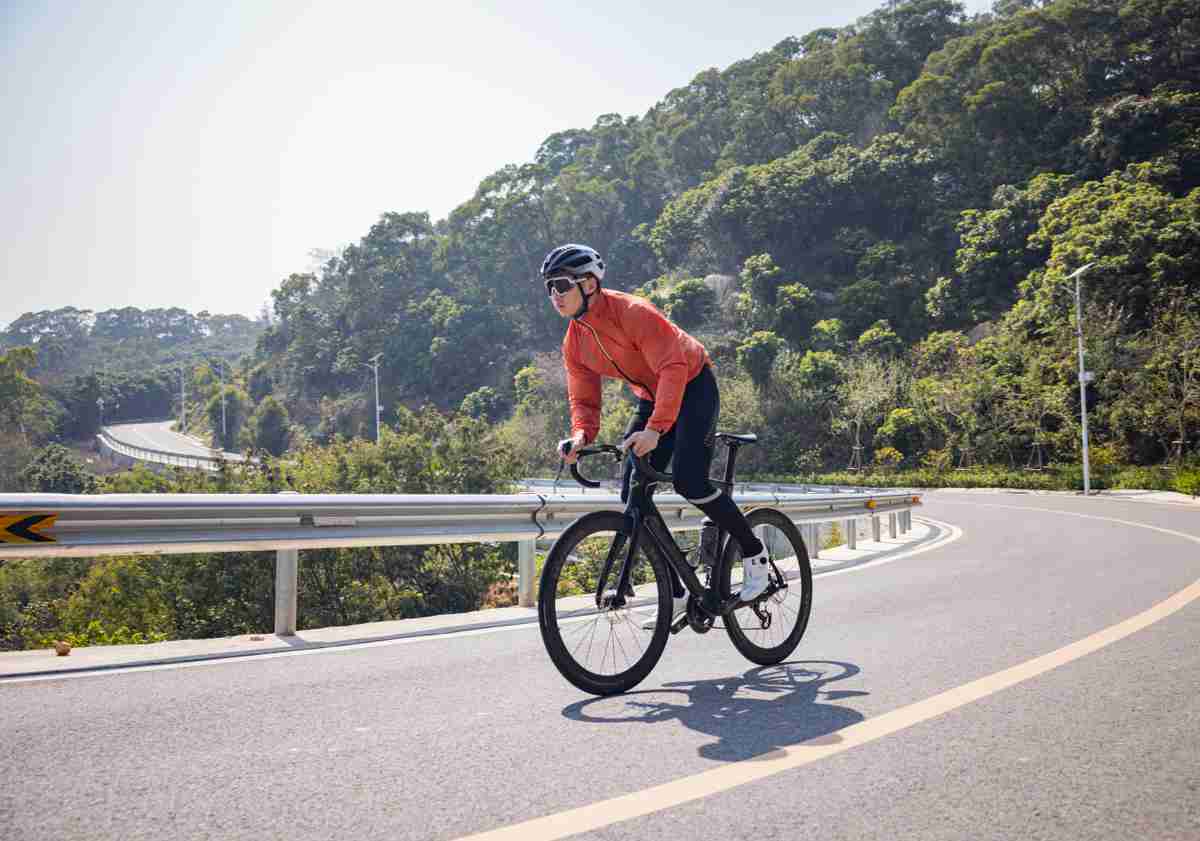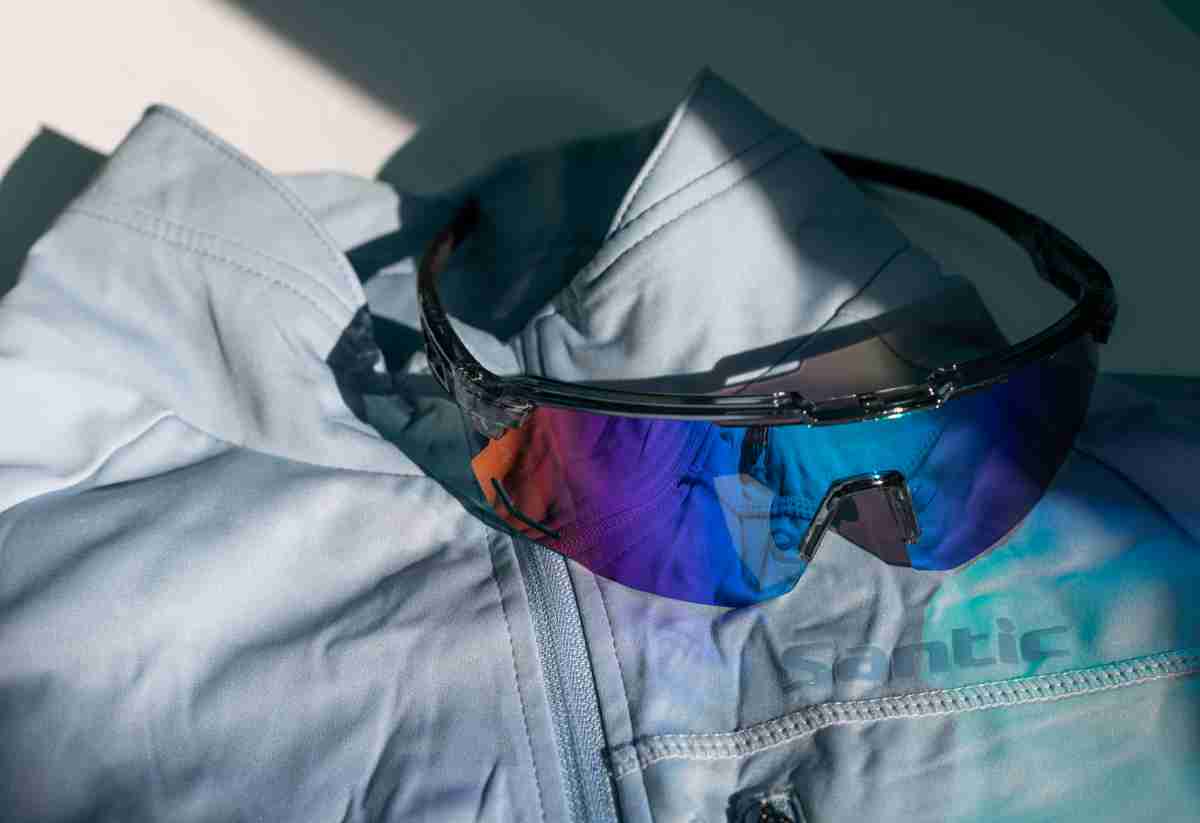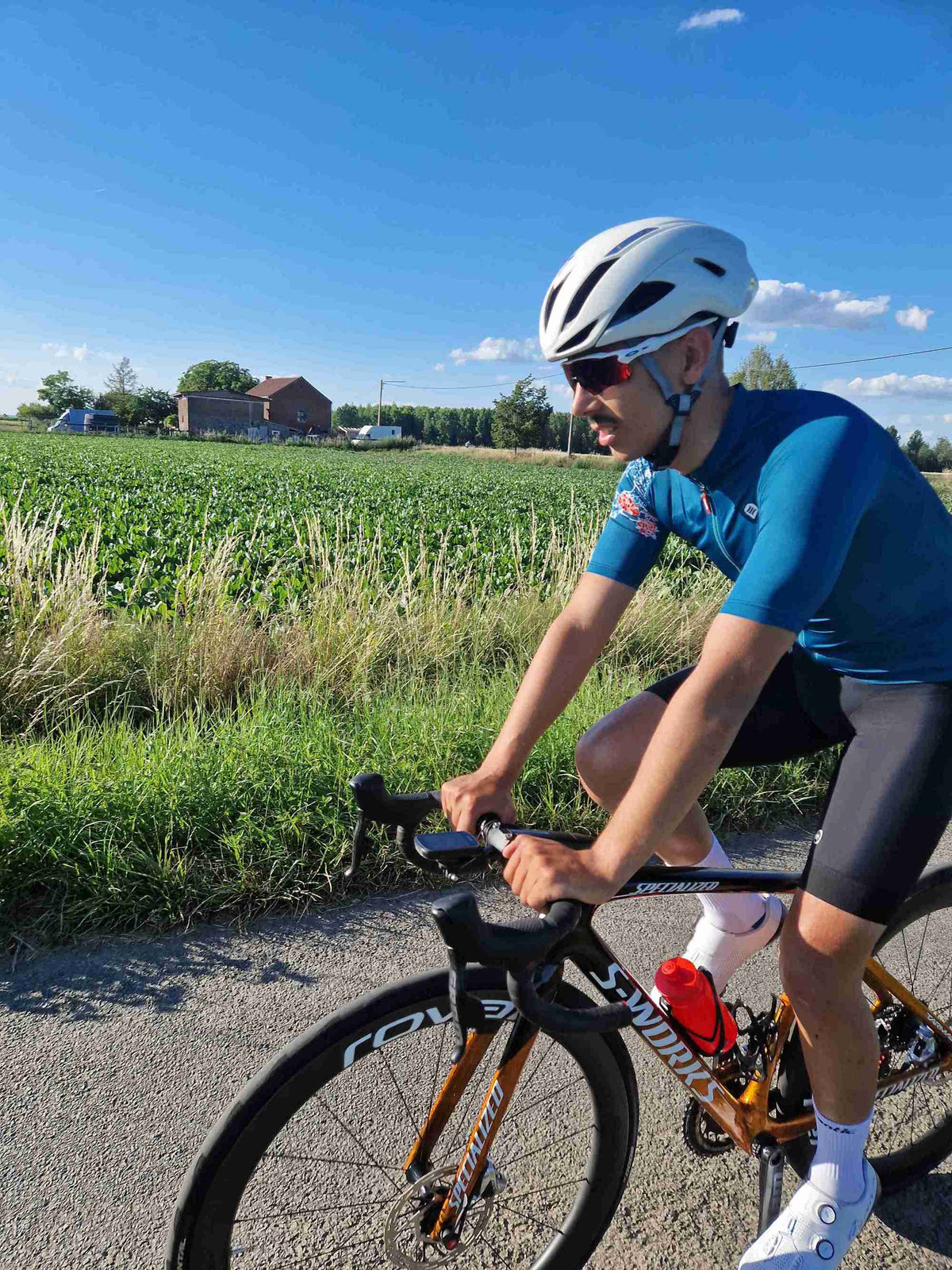13 Tips For Cycling in The Rain: Wet Weather Cycling Guide
The rainy season may be dangerous for bikers. Confronting roaring headwinds and torrential rain might be intimidating for any seasoned cyclist, but this should not be the case. Fortunately, there are methods that riders can use to withstand the poor weather conditions and continue riding.
This article puts up the best wet weather cycling guidelines to keep you safe and warm regardless of what the weather brings.
Here is how to ride in the rain without getting wet or cold:
01: Get a Good Waterproof Jacket
Go for a jacket with frontal insulating material, a decent high neckline with a zipper, backside ventilation, and sleeves with good movement. Most riders enjoy riding with light, foldable weather jackets, and in most cases, they do this when they are not expecting it to rain.
The perfect material is Gore-Tex, which is both breathable and waterproof. You should have a breathable shirt to avoid overheating when riding. A lightweight raincoat can also go well with the proper layers below, but relentless rain storms will ultimately get over that.
02: Keep Splashing Off With Mudguards (Fit Some Mudguards)
Installing guards on your bike can keep water from splashing into you without requiring you to don all of your appropriate rain gear.
To avoid skidding out, desist from braking in corners at all costs. Instead, accelerate before entering the bend. That is excellent advice for turning in any circumstance, but it is especially effective in mud: When the terrain rolls with you, you gain far less grip.
They can significantly improve your riding experience by staying dry, comfortable, and warm; you can bike and practice harder for longer when you are not soaked, cold, and unhappy.
03: Wear Waterproof Overshoes and Gloves
As all bikers understand, the limbs are the first to get cold and snowy. Regardless of the entire body temperature, it is tough to relish your ride if your hands get too chilly. Investing in a pair of cold-weather riding gloves to keep your hands warm will make a significant difference during the cooler months.
Like many people, if you spend most of your riding time in the rain, snow, and maybe cold weather, a pair of riding overshoes to block out the extremes and keep you going is necessary.
04: Keep Your Body Warm
A windproof jacket is possibly the best piece of wet weather cycling equipment. A raincoat will protect you and your belongings from rainfall and roadway spray. A jacket also helps to regulate body warmth, so select one that is comfortable.
Waterproofing rain pants, boots, or shoe covers protect you from water sprayed up by your wheels as you travel.
05: Look After Your Eyes
When riding in the rain, a set of bicycle eyeglasses with a clear projection is an excellent way to protect your eyes. They also prevent dirt and dust from getting into your eyes, which is very useful while cycling. Some frames have replaceable glasses, and a tint can help with contrast enhancement.
06: Check Your Brake Pads
Braking safely becomes more difficult in the rain. Because the roads are typically slicker, the braking distance increases, and your brakes perform less effectively. Wheel brake pads wear quickly in wet conditions, so even if you are using graphite wheels, you can worry about stopping.
The trick to stopping in the rain is to take longer than usual and to do so carefully. Allow gravitational pull and wind resistance to do the work by removing your foot from the throttle and allowing gravitational and wind resistance to bring your car to a halt.
When riding within 30 minutes of rain, be extremely cautious when moving and halting; the grease from automobiles has not yet been wiped off the ground and may be slippery when combined with rainwater.
07: Use Chain Degreaser
After a rainy ride, you should quickly wash and dry off. The same is true for your chain. Cover it with a degreaser and thoroughly clean it with a cloth until it dries.
After that, a few droplets of lubrication will safeguard it over the next trip. If you do this, you may extend the longevity of the chain.
You should spray metallic moving elements, such as the front and rear gears and braking systems. Avoid getting degreaser on the wheel rims, brake bolkes, hubs, or bottom bracket. After a damp ride, your entire bike should be clean, so consider washing it. Though washing the bike after every ride may be challenging, you may get home tired and forget to wash it. However, for your bike to serve you longer and better, make it a common practice to wash your bicycle after a wet ride.
08: Wear A Waterproof Cycling Cap
A cap is a vital piece of equipment you may use for all your rides if you want a modest alternative for all-weather circumstances. A cycling cap differs from a headband. It has a peak, but it is composed of very lightweight fabric. You will get the optimum fit; the top is more elastic, and the hat is composed of a flexible material.
Rain cycling caps made of breathable, water-repellent, breathable fabrics are available, but a traditional cycling hat worn under headgear is preferable to none. The visor on the cap will keep water out of your face, and the additional layer on your head will provide some warmth in cold weather changes. It will safeguard your head from the effects of atmospheric vents without excessive heat on your head, like a thermoelectric cap crafted for freezing temperatures.
09: Watch Out For Road Hazards
Keep an eye out for puddles, leaves, gravel, broken glass, potholes, and pets. All of these dangers can lead to a collision. When cycling with buddies, shout out and signal them about dangers on the road to inform the cyclists following you.
♦ Avoid Puddles
They can make you deviate from your path or, in the worst-case situation, ruin your tires or cause you to tumble. They get more difficult in the rain because of the lessened grip and because you may not tell if it is a small puddle or a massive hole of death. Keep your distance!
They are undoubtedly a lot of fun to bike around in! Puddles, on the other hand, might conceal dangerous pebbles that damage tires or big potholes that hurl you over your arms when you encounter them. If you stumble a bit when riding across a large puddle and have to stop, your dripping wet foot.
♦ Keep An Eye On Road Markings, Crosswalks, And Any Other Signs Painted On The Road.
Keep an eye out for roadway indicators, pedestrian walkways, or any other signals painted on the road surfaces. In wet weather, they become exceedingly slippery, and if you tilt too far, you will tumble off the bicycle.
Whenever it rains, the pebbles are wet, and cobblestone and concrete roadways are hazardous. Be on the lookout when riding on a rainy day because you may miss some road signs. They are exceptionally slippery, and considering how frequently it rains in the fall and winter, you will undoubtedly encounter this on the journey.
♦ Pay Special Attention to Manhole Covers
Keep an eye out for manholes and other underground utilities. They are particularly slippery due to their metal construction. Your tire may become trapped in a few of them, sending you soaring over the handlebars.
♦ Cobblestone And Paved Roads Are Dangerous When It Rains Or If The Stones Are Still Wet
When cycling out in the rain, you should watch out for cobblestone and paved roads on the roadway. They are slippery when it rains, and considering how frequently it rains in fall and winter, you will undoubtedly encounter this on the journey.
♦ You Should Watch Out For Leaves That Have Fallen From Trees On The Road
When it rains, leaves that have fallen from tree branches on the road become very slippery, and since it rains mostly in fall and winter, you will have to brace yourself for this scenario and prepare yourself for rough encounters.
10: Check Your Tires And Reduce The Pressure
If the road is slightly damp but not flooded, lower pressures can help you firm up the bicycle. If there is rain, like in pools of water and rivers, higher pressures will help to have a firm and stable ride so the tire can split through the water.
Slippery road surfaces make it difficult to maintain grip between your wheels and the terrain. Slippery roads give fewer grips on your road surface, so you will want to increase this to assist your tires during wet weather. You may accomplish this by lowering your tire pressure. Low pressure tires allow for a minor increase in friction between the road and your tire, enhancing friction and providing an even grip under damp road conditions. Generally, when preparing for a rainy ride, you should let some air out of your tires.
11: Use Bike Lights
It might become a little dreary out there when the sky above is heavy with heavy clouds, so do your part to protect your visibility by activating lamps throughout your ride and not only at night. This will keep you visible to other road users.
Installing some nice headlights will keep you visible to everyone else on the road. This is vital when the rain is pouring down and will help you spot any dangers on the road.
You can install lights on your bike frame or helmet.
12: Choose Slick Tires for More Grip
Slick tires are ideal for riding on highways and flat terrain. Slick tires provide less friction, allowing you to go more effectively. Cycling commuters may want to avoid breaking a sweat on their way to and from work. Slick tires, although having less tread, do not considerably enhance your risk of sliding on wet surfaces.
The tread pattern of tires serves two functions. For starters, it improves traction in soft conditions where a tire may readily sink in. When there is wetness on the firm pavement, it could be risky to ride, but if you have a good tire, it will help with the slippery roads. Nevertheless, for bike tires the tread design has only been utilized in off-road or snowy situations, with no application on paved roads.
The idea is that you do not have to be concerned about slipping. Slick tires are spot on! On normal roads, they outperform treaded alternatives in gripping and rolling friction, and those same attributes make them superior in damp weather.
13: Consider Going Tubeless (Watch Out For Punctures)
Tubeless road tires, formerly the realm of mountain bikers, are becoming extremely popular among road riders, particularly with the rise of go-anywhere action bikes.
In damp conditions, the benefit of tubeless tires is the sealants which ensure that any minor dents heal extremely fast, stopping air from escaping.
Another benefit is that they may be operated at considerably lower pressures than traditional slick tires, resulting in a bigger contact patch that is especially beneficial on wet surfaces.
Seasoned bicycle riders know very well that riders experience more punctures in rainy weather. This is due to rain washing all the trash out of the drain and onto the road.
There is a prevalent claim that water serves as lubrication, allowing flints and shattered glass to slice through bicycle tires more readily than in dry circumstances. Even though there's no concrete data to back up or deny this hypothesis,
Although most of us do not see the need to change our tires according to the weather, it is an option to opt for tires with more puncture resistance in the fall and winter when unpredictable rain patterns may come.
Conclusion
There is no need to be scared of cycling in the rain if you prepare well. It may be enjoyable to go on the bicycle when the heavens open, knowing that a warm bath and fresh coffee await you at home.
When you go out there, you will frequently discover that the circumstances are not as severe as you anticipated, and it is bound to be better than hanging on the turbo trainer gazing at the basement wall.
Related Articles
【Beginner Avoid Cycling Mistake】
https://santic.com/blogs/extra/beginner-avoid-cycling-mistake
【4 Bad Cycling Habits】
https://santic.com/blogs/extra/bad-cycling-habits
【Autumn Cycling Safety Reminders】
https://santic.com/blogs/extra/autumn-cycling-safety-reminders
【Winter Cycling Tips】
https://santic.com/blogs/extra/winter-cycling-tips









